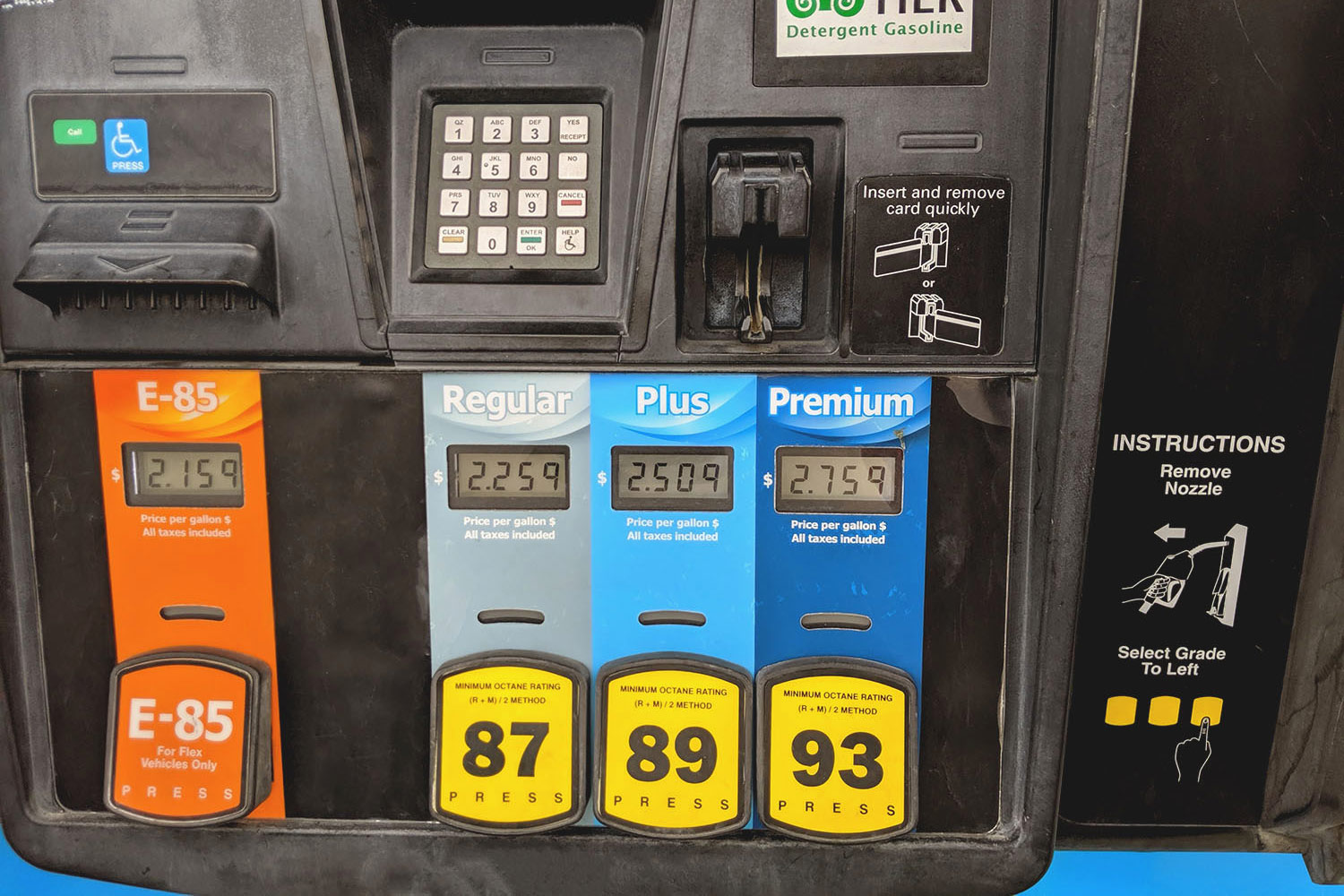Everything You Wanted to Know About Octane
Those numbers on the gas pump could be important to the well-being of your vehicle.
 Aaron Miller | Capital One
Aaron Miller | Capital One
Article QuickTakes:
When pulling up to the pump, you are often faced with an array of fuel choices that are graded and priced differently. The number you see next to each type is its octane rating. Which grade of fuel you choose matters to your wallet as well as to the smooth operation of your vehicle.
Octane is a hydrocarbon that results from the processing of petroleum into gasoline. The octane rating is a standardized measure of a fuel's stability — its resistance to spontaneous combustion. So, there is octane in your gasoline, and that octane level is measured by specific tests.
Fun fact: Octan is the Danish word for octane. It's also the faux gas brand used in many Lego play sets as well as the company headed by Lord Business in "The Lego Movie."
How Octane Ratings Are Determined
It might seem like fuel that is difficult to ignite would be an issue for an engine, but this is a desired quality in gasoline. This stability makes for controlled combustion and avoids the possibility of the fuel igniting at the wrong point in the piston's stroke — due to high temperature and pressure in the engine's cylinders — instead of when the spark plug fires. When fuel ignites before the spark plug fires, it results in pre-ignition, otherwise known as knocking or pinging.
In the U.S., octane ratings — the anti-knock index — are an average of two engine measurements: the motor octane number (MON) and the research octane number (RON). Other countries use only the RON rating at fuel pumps, which tends to be a little higher than a fuel's anti-knock index.
The difference between the MON and RON tests is the conditions under which the engine is run. MON comes from a test that mimics an engine at idle, while RON tests increase temperature and engine speed to simulate an engine under load.
These numbers come from a calibrated piece of lab equipment used to compare fuel samples against mixtures of iso-octane and heptane. The stable iso-octane has a reference value of 100, while unstable heptane has a value of zero.
Operators test the fuel until a certain knock threshold is reached. They then compare the sample fuel's performance against that of reference fuels with known octane ratings. So, a fuel that has a knock resistance equivalent to a mixture of 92% iso-octane and 8% heptane would have an octane rating of 92.
Certain Cars Run Better on Higher-Octane Fuel
Modern cars use sensors to detect knocking from lower octane fuel and can delay spark timing through the engine computer to compensate. When you put the recommended octane fuel in later, the computer will detect it and make the proper adjustments. While a tank of lower-than-recommended octane fuel isn't likely to cause permanent damage, ignoring the manufacturer's octane requirement long term could. However, engines in older vehicles without computerized fuel and ignition systems can be damaged by knock.
The best thing to do is to read the vehicle's owner's manual. It should tell you the minimum octane rating required for your engine, and it may specify a range of acceptable ratings, with higher octane resulting in greater power output.
Using fuel with a lower-than-specified octane rating can result in increased emissions and decreased fuel economy. In short, it's not worth the few bucks you'd save on a tank of fuel.
If your car doesn't call for premium or even mid-grade fuel, there's no advantage to putting it in the tank. Stick with the less expensive option.
High-Altitude Formulations Aren't for Every Vehicle
Anyone traveling through or living in mountainous states might notice that the octane ratings on gas pumps start at 85 or 86 instead of the 87 your car could ask for. This is a holdover from the carbureted-engine days. Because the air is less dense at altitude — so the engine's compression ratio is effectively lower — a carbureted engine can make do with lower-octane fuel while still resisting knock.
But these days, vehicles use fuel injection instead of carburetors and have computers to compensate for atmospheric pressure. They're not expecting fuel with a lower-than-recommended octane rating. Check your owner's manual for recommendations.
The Problems With Ethanol
Ethanol is a renewable fuel made mostly from corn in the U.S. that, when burned, absorbs carbon dioxide from the air. Gasoline companies are required to purchase large amounts of ethanol and add it to much of the gas they sell. Ethanol has a higher octane rating than regular gas, which raises the actual rating of the gas blend, but it produces a third less energy than gasoline.
Ethanol is also hygroscopic, which means it tends to absorb water from the air. This makes it problematic in engines without modern sealed emissions systems, especially those that are driven infrequently and therefore don't go through a tank of fuel very often. Fuel stabilizer might help extend the life of a tank of gas in those vehicles and prevent the corrosion that could otherwise result in water entering the system.
Gas containing ethanol comes in two basic categories: petroleum-derived gasoline with some ethanol added and fuel made mostly of ethanol. The former, called E10 or E15, usually contains 5% or 10% ethanol, and these days it's difficult to avoid. E85 can contain anywhere from 51% to 83% ethanol, and only vehicles designated as flex-fuel cars are designed to run on it.
According to the U.S. Department of Energy, E10 is the maximum for vehicles built before 2002 as well as motorcycles, boats, and lawnmowers.



